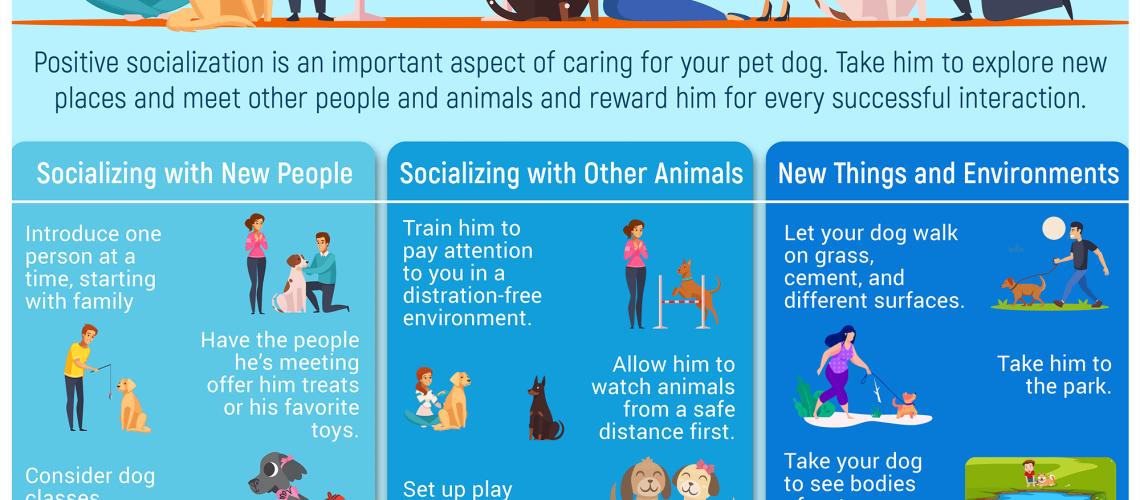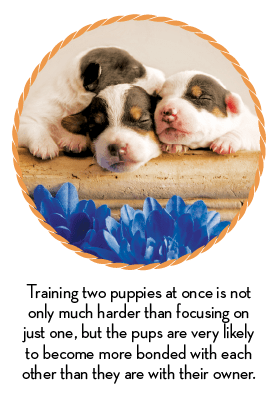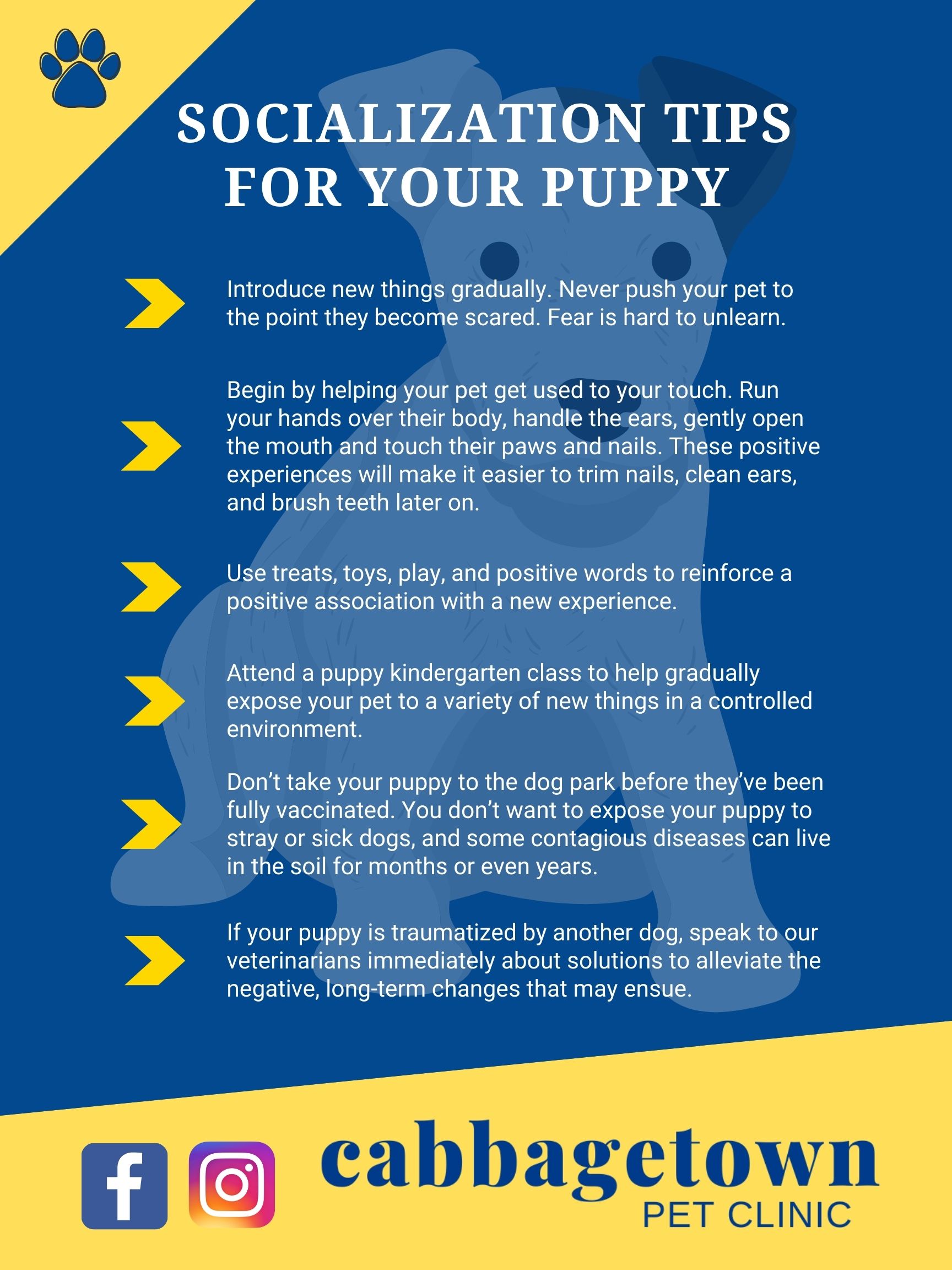Key Takeaways:
- Start socializing your dog or puppy at a young age to ensure they become well-adjusted and friendly adults.
- Expose your dog to a variety of people, animals, and environments to help them feel comfortable in different situations.
- Use positive reinforcement techniques, such as treats and praise, to reward your dog for good behavior during socialization exercises.
- Gradually increase the difficulty of socialization exercises to challenge your dog without overwhelming them.
- Seek professional help if your dog displays signs of fear or aggression during socialization, as these issues can be addressed with proper training.
Are you tired of your furry friend barking at every passerby? Or perhaps you're concerned that your new puppy might become fearful or aggressive around other dogs. Well, fret no more! Learning how to socialize your dog or puppy is the key to unlocking a world of benefits for both you and your four-legged companion. By understanding the importance of socialization and implementing effective techniques, you can ensure a happier, healthier, and more well-behaved pet. So, let's dive into the wonderful world of canine socialization together and discover how it can transform your furry friend into the life of the party!
The Importance of Socializing Your Dog or Puppy
Building a Strong Bond
When you socialize your dog or puppy, you are helping them develop important social skills and build a strong bond with you. By exposing them to different people, animals, and environments, you are teaching them how to navigate the world around them. This will help them feel more comfortable and confident in various situations, which can prevent behavioral issues down the line.
Preventing Aggression and Fear
Socializing your dog from a young age can help prevent aggression and fear towards other dogs, animals, and people. When dogs are not properly socialized, they may become fearful or aggressive when faced with new experiences. By gradually introducing your dog to different stimuli in a positive and controlled manner, you can teach them that these experiences are not threatening. This can greatly reduce the likelihood of aggressive behavior or fear-based reactions.
Improving Overall Well-being
Socialization is not only important for your dog's behavior but also for their overall well-being. Dogs are social creatures by nature, and they thrive on interaction with others. Through socialization, your dog will have the opportunity to meet new friends (both human and canine) and engage in playtime. This helps stimulate their minds, keep them physically active, and prevent boredom or loneliness.
Basic Steps to Start Socializing Your New Pet
Create a Positive Environment at Home
To start socializing your new pet, it's crucial to create a positive environment at home. Provide them with a safe space where they feel comfortable and secure. Make sure they have access to food, water, toys, and a cozy bed. Establishing a routine for feeding and exercise will also help your pet feel more secure in their new surroundings.
Gradually Introduce New Experiences
Once your pet is settled in, begin gradually introducing them to new experiences. Start with short outings to quiet and familiar places, such as a park or a friend's house. Allow them to explore at their own pace while providing positive reinforcement through treats and praise. As they become more comfortable, you can gradually increase the level of stimulation by exposing them to busier environments or introducing them to new people and animals.
Enroll in Puppy Classes or Training Programs
Enrolling your puppy in puppy classes or training programs can be an excellent way to socialize them in a controlled environment. These classes provide opportunities for your puppy to interact with other puppies and learn basic obedience commands. Additionally, professional trainers can offer guidance on proper socialization techniques and address any specific concerns you may have.
Safely Introducing Your Dog or Puppy to New People
Start with Familiar Faces
When introducing your dog or puppy to new people, it's best to start with familiar faces. Begin by inviting friends or family members over who are calm and comfortable around dogs. Ask them to approach your dog calmly and let your dog initiate contact if they feel comfortable. Provide treats as positive reinforcement for good behavior during these introductions.
Use Positive Reinforcement Techniques
During the introduction process, use positive reinforcement techniques to help your dog associate meeting new people with positive experiences. Reward your dog with treats, praise, and affection when they approach new people calmly and show friendly behavior. This will help build positive associations and make future introductions easier.
Take It Slowly
It's important to take introductions slowly and at your dog's pace. Rushing the process can cause stress or anxiety for your pet. Allow them time to observe from a distance before approaching new people. Gradually decrease the distance between your dog and the new person, always monitoring your dog's body language for signs of discomfort or fear. If your dog shows signs of stress, give them space and try again later.
Effective Techniques for Socializing Your Dog with Other Animals
Start with Controlled Interactions
When socializing your dog with other animals, it's essential to start with controlled interactions. Begin by introducing them to calm and friendly dogs or animals in a neutral territory. Keep both animals on a leash initially to maintain control and prevent any potential conflicts. Allow them to sniff each other while closely monitoring their behavior.
Positive Reinforcement for Good Behavior
Reward your dog with treats, praise, and playtime when they display good behavior during interactions with other animals. This positive reinforcement will help them associate these encounters with positive experiences. It's important to remain calm and confident during these interactions to help your dog feel secure.
Gradually Increase Exposure
As your dog becomes more comfortable with controlled interactions, gradually increase their exposure to different animals in various environments. Attend supervised playdates or visit dog parks where they can interact with a variety of dogs under supervision. Always prioritize safety and monitor their behavior closely.
Helping Your Dog Overcome Fear or Anxiety During Socialization
Patiently Expose Them to New Experiences
If your dog shows fear or anxiety during socialization, it's crucial to expose them patiently and gradually to new experiences. Start by exposing them from a distance and slowly decrease the distance over time as they become more comfortable. Provide plenty of positive reinforcement through treats, praise, and affection when they display calm behavior.
Avoid Forcing Interactions
Forcing interactions can intensify fear or anxiety in dogs. Instead, allow your dog to approach new people or animals at their own pace. Respect their boundaries and give them the option to retreat if they feel overwhelmed. By providing them with choices, you can help build their confidence and reduce anxiety.
Seek Professional Help if Needed
If your dog's fear or anxiety persists despite your efforts, it may be beneficial to seek professional help from a certified dog trainer or behaviorist. They can provide specialized guidance and develop a tailored socialization plan to address your dog's specific needs.
The Role of Consistency in Socializing Your Pet and Why It's Important
Establishing Clear Rules and Boundaries
Consistency is crucial when socializing your pet because it helps establish clear rules and boundaries. By consistently reinforcing desired behaviors and discouraging unwanted behaviors, you are teaching your pet what is acceptable and what is not. This consistency creates structure for your pet, making them feel more secure and confident in their interactions with others.
Building Trust and Reliability
Consistency builds trust between you and your pet. When they understand that you will consistently provide guidance, support, and positive reinforcement during socialization experiences, they learn to rely on you for direction. This trust strengthens the bond between you and your pet, making future socialization efforts smoother.
Maintaining Good Behavior Long-Term
Consistency is key to maintaining good behavior long-term. Once your pet has learned appropriate socialization skills, it's important to continue reinforcing these behaviors consistently throughout their life. Regularly expose them to new experiences, people, and animals while providing positive reinforcement for good behavior. This will ensure that their social skills remain sharp, reducing the risk of regression or behavioral issues.
Tips for Maintaining Good Behavior While Socializing Your Dog in Public Places
Use a Leash and Harness
When socializing your dog in public places, always use a leash and harness to maintain control. This ensures the safety of your dog and others around you. Practice loose-leash walking techniques to prevent pulling or lunging, which can be intimidating to others.
Practice Basic Obedience Commands
Teaching your dog basic obedience commands such as "sit," "stay," and "leave it" is essential for maintaining good behavior in public places. These commands allow you to redirect your dog's attention and keep them focused on you during potentially distracting situations.
Reward Good Behavior Consistently
Consistently reward your dog for good behavior in public places. Use treats, praise, or playtime as positive reinforcement when they display calm and appropriate behavior around other people or animals. This will reinforce their understanding of what is expected of them in different environments.
Be Mindful of Your Dog's Comfort Level
Pay attention to your dog's body language and comfort level while socializing them in public places. If they show signs of stress or anxiety, such as excessive panting, cowering, or trying to hide, it may be best to remove them from the situation temporarily. Gradually expose them to new environments at a pace that is comfortable for them.
Remember that every dog is unique, and some may require more time and patience during the socialization process. By following these tips and remaining consistent in your efforts, you can help your dog become a well-socialized and confident companion.
In conclusion, socializing your dog or puppy is important to help them become well-behaved and friendly. By introducing them to new people, animals, and environments in a positive way, you can ensure they grow up to be happy and confident pets.
https://www.youtube.com/watch?v=5hXnQyxwVUY&pp=ygUiSG93IHRvIFNvY2lhbGl6ZSBZb3VyIERvZyBvciBQdXBweQ%3D%3D
How do I socialize my dog with my puppy?
When introducing your dogs for the first time, it's important to have someone else present to focus on each dog. It is recommended to choose a neutral location, such as a park, for the meeting. It is best to avoid introducing the dogs in the house or yard, as the resident dog may become territorial.
Is it ever too late to socialize a dog?
You can still socialize an adult dog, even if they have limited experience. Take your dog outside and start socializing them today. We wish you good luck, and once your dog is ready, we would love to have them at Hounds Lounge for doggie daycare. Also, don't forget to connect with us on social media.
How long does it take for a dog to get used to a new puppy?
The process of introducing a new dog to an existing dog can take up to a month for them to fully adjust and accept their positions within the pack. If you are considering getting a second dog, you must be prepared to commit to this process and not become anxious or worried.
What is the rule of 7 puppy socialization?
The animal has experienced eating from at least 7 different containers, being touched and caressed by at least 7 different individuals, taking at least 7 car rides of one mile each, being in a crate at least 7 times, playing with at least 7 different types of toys, and walking on at least 7 different surfaces such as grass, gravel, and concrete.
Can I still socialize my 1 year old dog?
Even though a dog's critical period of socialization typically ends around 4-5 months old, we suggest continuing to socialize your dog for at least the first year of their life.
At what age are dogs OK alone?
For puppies between 3-6 months old, it is recommended not to leave them alone for more than their age in months (e.g., a 3-month-old puppy shouldn't be alone for longer than 3 hours). Ideally, dogs over 6 months old should not be left alone for more than 4 hours at a time.

















